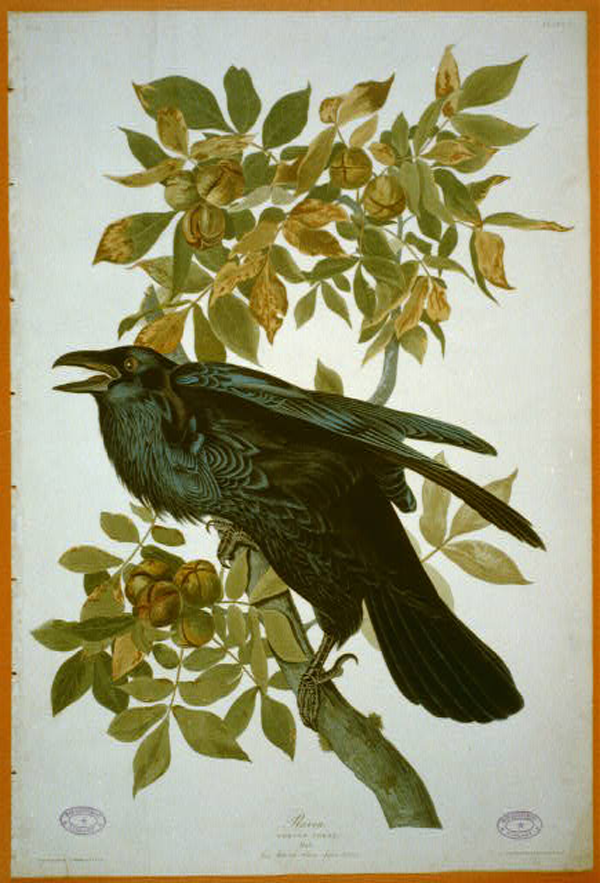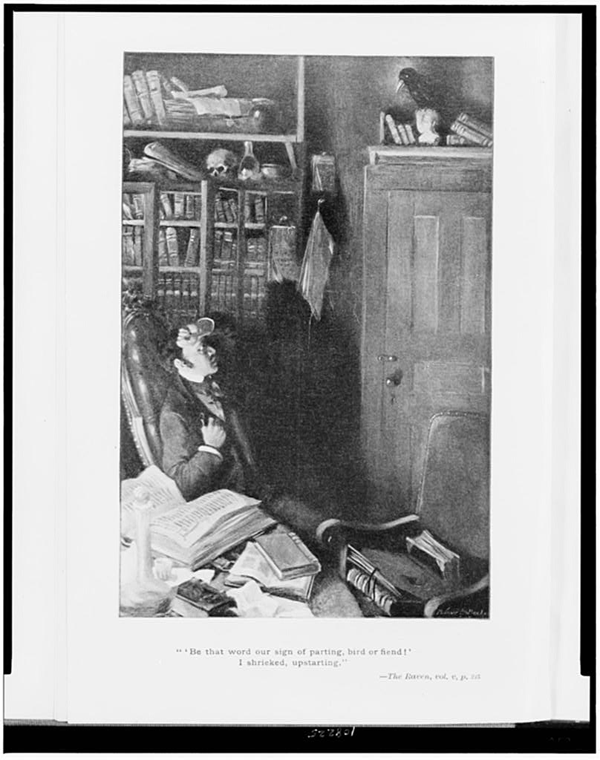Teach This Poem is a weekly series featuring a poem from our online poetry collection, accompanied by interdisciplinary resources and activities designed to help K-12 teachers quickly and easily bring poetry into the classroom.


The following activities and questions are designed to help your students use their noticing skills to move through the poem and develop their thinking about its meaning with confidence, using what they’ve noticed as evidence for their interpretations. Read more about the framework upon which these activities are based.
- Warm Up (noticing and partner work): Look closely at the image of the drawing of the raven. How might you feel if you came across this bird? How might you feel if it started speaking to you? Why?
- Before Reading the Poem (small groups): Look at the image of the photograph titled Man Seated in his Library, Looking at Raven. What do you notice first? Why? What else do you notice? Look again. What’s going on in this image? How do you know? How do you think the man in painting feels? Why? How do you think that the raven feels? Why? (Teachers, if you feel like your students need more context about ravens, you might encourage them to read the article “10 Fascinating Facts About Ravens.”)
- Reading the Poem: Read the poem “The Raven” by Edgar Allan Poe silently. Notice the words and phrases that jump out at you, then think about what you noticed as you annotate the poem. (Teachers, since this is a long poem, you might want to have students read the poem with a partner and look up any confusing words in the dictionary.)
- Listening to the Poem (enlist volunteers to read the poem aloud): Listen as the poem is read aloud once and write down any additional words and phrases that jump out at you. (Teachers, as this is a long poem, you may wish to ask volunteers to read aloud the stanzas. You can also choose to only listen to the poem once.) Then, listen to the poet Anne Waldman perform the poem. Call back the lines that you like by saying these lines aloud with your group.
- Small-group Discussion: Share what you noticed in the poem with your partner and another pair of students. What lines stood out to you and why? What is the conflict in the poem?
- Whole-class Discussion: In the beginning of the poem, how does the speaker feel about the raven? Why? How does the speaker’s attitude toward the raven change throughout the poem?
- Extension for Grades 7-8: Write the prequel to the poem, where you explore what you think happened to Lenore, or write a sequel to the poem, where you explore what happens next.
- Extension for Grades 9-12: Continue your study of Edgar Allan Poe by reading more of his poems (including “Annabel Lee,” “Spirits of the Dead,”and “Ulalume”) or one of his stories (including “The Fall of the House of Usher” and“The Tell-Tale Heart”). Write your own poem or short story inspired by Edgar Allan Poe. Be sure to incorporate some of the same themes into your poem or story that you found in Poe’s work.
More Context for Teachers
In his essay “The Heresy of the Didactic,” Edgar Allan Poe writes, “It has been assumed, tacitly and avowedly, directly and indirectly, that the ultimate object of all Poetry is Truth.” Read more.
